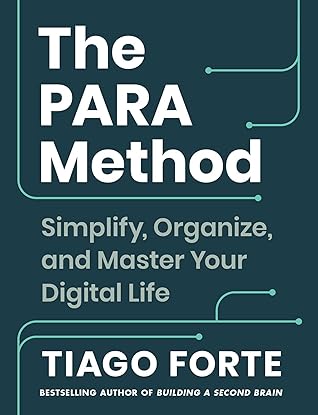More on this book
Community
Kindle Notes & Highlights
by
Tiago Forte
Read between
January 9 - January 11, 2024
putting what you learn into practice,
the ultimate system for organizing your life is one that is actionable.
What you do have, both at work and in life, are outcomes you are trying to achieve.
Instead of organizing information according to broad subjects like in school, I advise you to organize it according to the projects and goals you are committed to right now.
“organize for action,”
“short-term efforts,” which means they need a clear end date.
What does our motivation depend on? Mostly, on making consistent progress. We can endure quite a bit of stress and frustration in the short term if we know it’s leading somewhere.
Which brings us to our second problem: without a list of individual projects, you can’t connect your current efforts to your long-term goals.
When you break down your responsibilities into bite-size projects, you ensure that your project list is constantly turning over. This turnover creates a cadence of regular victories that you get to celebrate every time you successfully complete a project.
It is about identifying the structure of your work and life—what you are committed to, what you want to change, and where you want to go.
It is about organizing information in such a way that it supports and calls into being the future life you want to lead.
In reality, we are seeking any little thing we can polish or tidy to avoid having to face the task we are dreading.
You can keep everything, but you can’t keep it front and center in your attention. It needs a place to go for safekeeping—one
That place is the Archives.
select all the existing files,
and move them all at once into a new folder called “Archive [Today’s date].”
Then, place this new dated archive folder inside another, larger folder titled simply “Archives,”
For the second step, start by creating a new folder called “Projects.” This will be the official home of all your information related to projects (short-term efforts with a clear end goal) going forward. Inside that new folder, create a subfolder for each one of your active projects and title them with the name of each project.
they are the endeavors you’re actively working on right now.
You can go ahead and start moving any documents, notes, or files you’re actively working with into the appropriate project folders,
This experience led me to form a new rule: never create an empty folder (or tag, or directory, or other container) before you have something to put in it.
Therefore, for your areas and resources, I recommend you hold off on creating any “speculative” folders until you’re sure what you want to put in them.
These two categories are less actionable, and therefore less important,
TIP #1: Create an Inbox
The inbox is a temporary holding area where new items accumulate until you have time to put them in their proper place.
TIP #2: Number the Folders
TIP #3: Use a Naming Convention
I like to use an informal naming convention to make this possible, such as: Emojis at the beginning of titles for project folders Capitalized titles for area folders Uncapitalized titles for resource folders
I recommend you do all the upkeep of your PARA system in just five minutes per week. All you need to do is follow these three easy steps: Retitle new items in your inbox Sort new items into PARA folders Update your active projects
My definition of a project is any endeavor that has: A goal that will enable you to mark it “complete” A deadline or timeframe by which you’d like it done
A goal is simply “the outcome the project is trying to achieve.”
An area of responsibility has: A standard to be maintained An indefinite end date
areas of responsibility in your personal life, like your health, finances, personal development, and relationships, which will continue in some form for as long as you live.
the areas have no particular outcome to be achieved.
Instead of a goal, an area of responsibility has a standard you’re trying to maintain.
This is the realm of daily habits, meaningful rituals, and timeless values that transcend any particular project.
To put it simply: projects end, while areas continue indefinitely.
Think of projects as sprints—you are sprinting to reach the finish line as fast as possible. Areas are like marathons—you have to sustain a consistent level of performance over a long distance.
sprints to ramp up something new, and marathons to sustain it.
The key here is to realize that there is a big difference between things you are directly responsible for and things you are merely interested in.
Areas: The Roles You Play and the Hats You Wear Areas are parts of our lives that require ongoing attention to uphold a certain level of quality or performance.
Resources: Interests, Curiosities, and Passions
Resources can include new skills you’re learning,
They could be fields or trends you’re curious about, like parenting, cryptocurrency, or artificial intelligence.
Resources can also include your hobbies and passions: woodworking, bread bakin...
This highlight has been truncated due to consecutive passage length restrictions.
“Is this useful?”
Areas Are Private Whereas Resources Are Shareable
Areas of responsibility are inherently private. It’s no one else’s business what material you save related to your Health, Finances, Personal Growth, or Kids. For example, in my Health (area) folder, I keep blood panels, notes from doctor’s visits, medical bills, and vaccination records (all things relevant only to me personally).


